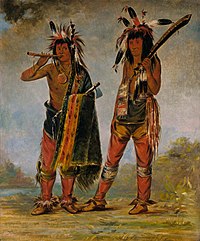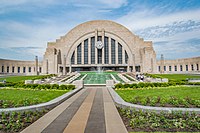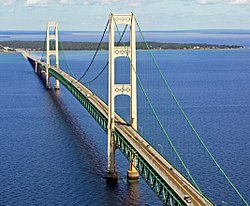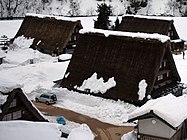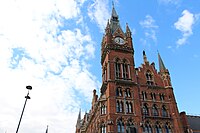Wazheganon
This article is incomplete because it is pending further input from participants, or it is a work-in-progress by one author. Please comment on this article's talk page to share your input, comments and questions. Note: To contribute to this article, you may need to seek help from the author(s) of this page. |
Federated Commonwealths of Walzenia 6 other official names a
| |||||||||||||||
|---|---|---|---|---|---|---|---|---|---|---|---|---|---|---|---|
Coat of Arms
| |||||||||||||||
| Motto: "Ënnert de trëttoir, de strand." "Beneath the pavement, the beach." | |||||||||||||||
| Anthem: Dës Land Es Jour Land "This Land Is Your Land" | |||||||||||||||
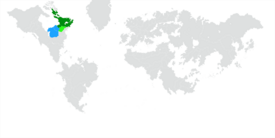 Location of Walzenia on Earth | |||||||||||||||
 Political Map of Walzenia | |||||||||||||||
| Capital | Moienrout | ||||||||||||||
| Largest city | Lenzneuve | ||||||||||||||
| Official languages | none at the federal level | ||||||||||||||
| Recognised national languages | |||||||||||||||
| Recognised regional languages | |||||||||||||||
| Ethnic groups | List of ethnicities
| ||||||||||||||
| Religion | List of religions
| ||||||||||||||
| Demonym(s) | Walzer (noun) Waltch (adjective) | ||||||||||||||
| Government | Libertarian socialist federated semi-direct democracy | ||||||||||||||
• Chancellor | Theodosia Wolff | ||||||||||||||
• Stettholder | Minegan Kovarich | ||||||||||||||
| Legislature | Commonwealth Congress | ||||||||||||||
| General Committee | |||||||||||||||
| Commonwealth Congress | |||||||||||||||
| Independence from Ottonia | |||||||||||||||
| July 6th, 1711 | |||||||||||||||
| August 18th, 1724 | |||||||||||||||
| June 18th, 1921 | |||||||||||||||
| July 8th, 1953 | |||||||||||||||
| July 8th, 1975 | |||||||||||||||
| Area | |||||||||||||||
• Total area | 1,854,816 km2 (716,148 sq mi) | ||||||||||||||
• Water (%) | 11 | ||||||||||||||
| Population | |||||||||||||||
• 2020 census | 47,703,216 | ||||||||||||||
• Density | 25.71/km2 (66.6/sq mi) | ||||||||||||||
| GDP (nominal) | 2020 estimate | ||||||||||||||
• Total | $1,403,905,646,880 | ||||||||||||||
• Per capita | $29,430 | ||||||||||||||
| Gini (2015) | low | ||||||||||||||
| HDI (2015) | very high | ||||||||||||||
| Currency | Waltch guilder (Wƒ) (WZG) | ||||||||||||||
| Time zone | UTC -4 to -5 | ||||||||||||||
| Date format | dd/mm/yyyy | ||||||||||||||
| Driving side | right | ||||||||||||||
| Calling code | +48 | ||||||||||||||
| Internet TLD | .wz | ||||||||||||||
Walzenia (/wɔːlˈzɛnˌiə/ wal-ZEN-ee-ə, -ZEN-yuh) , officially the Federated Commonwealths of Walzenia, is a country in northeastern Norumbia. Its 27 commonwealths cover an area of approximately 1,854,816 square kilometers (716,148 square miles), situated between the Sea of Dakmoor in the north and northeast, North Thalassian Ocean in the southeast, Winivere Bay in the west, and bordering Placeholderland in the south. The capital of Walzenia is Moienrout, and its population of 47,703,216 people live mostly in the region surrounding the lake Kitchigami and the Saint Anne River, with its largest city, Lenzenueve, forming the core of a megalopolis, the Saint Anne Megalopolis, whose other notable cities include Jubeugon, Moienrout, Hannes, and Minouche. Walzenia is a highly multicultural country, with approximately 50% of Walzenia's population being of mixed ancestry, 20% being of indigenous ancestry, and another 10% being of non-Belisarian descent.
Various indigenous peoples inhabited what is now Walzenia for thousands of years before Belisarian colonization. Four major indigenous polities, the Odachiimikaan, ruled the region and repelled Ottonian incursions as early as the 12th century, with records of their formation dating back to at least the 9th century. Following the Great Lake War in the late 16th century, the Odachiimikaans' weakened state allowed the Ottonians to gain a foothold along the eastern coast and populate it with persecuted Niederaulish minorities. Walzenia was formed when this colony gained its independence in 1721, at which point it began gradually absorbing the remaining indigenous polities in the region through both diplomacy and warfare, reaching its modern borders by 1873. The Waltzing Coups dominated Waltch politics for much of the 19th century, causing significant political turmoil and popular unrest. Beginning in the 1880s, the country saw a series of socialist reforms and uprisings which ultimately culminated in the Second Waltch Revolution and Waltch Civil War from 1919-1921. Afterwards, Walzenia experienced a series of smaller revolutionary waves and coups before finally galvanizing into the contemporary political structure in 1953. Significant reforms in pursuit of decolonization took place in the 1970s.
Walzenia is a libertarian socialist federation in the communalist tendency, with a unicameral legislature which elects a steering committee to carry out executive functions, as part of a system of council democracy. It possesses an advanced manufacturing-service economy revolving around foodstuffs, wood and paper products, telecommunications, and tourism. Walzenia ranks highly international measurements of civil liberties, government transparency, economic freedom, education, and quality of life. It is a regional power and a member of several international organizations and alliances, including the Forum of Nations, Joint Space Agency, and Kiso Pact.
Etymology
The origins of the name Walzenia are historically obscure. Its Waltch translation, Valzenjia, entered into common usage as an informal name for the eastern coast of the modern country in the early 17th century and was adopted as the official name of the of the country upon independence in 1721.
One prominent origin theory, arising in the 19th century but now not typically accepted among historians, is that the name is derived from the House of Avaler, a Brasbourger noble family that played a significant part in Belisarian colonization and creation of the first independent Waltch republic. However, evidence of a highly similar name, Valzia, also used in reference to the east coast, can be found as early as 1512, nearly a century before Ambrosius Avaler first traveled to Norumbia, and was used in the maps as early as 1563.
As a result, the theory most agreed upon by historians is that the name comes from that of 15th century explorer Dietrich Valza, who was notable for his northerly and inland expeditions in Norumbia. The name entered into common usage among Niederaulish colonists in the decades following Valza's voyages, eventually evolving into Valzenjia, which was then first anglicized into Walzenia in the appendix of Armand Weber's popular 1601 atlas. The demonym of "Waltch" is thus believed to derive from the word Valzisch, which was used by Niederaulish settlers to differentiate themselves from Ottonians as early as 1620.
This name is historically contentious but remains in both official and colloquial use in most places. Some groups claim that the word Waltch as a nationwide demonym marginalizes some groups, especially the indigenous First Nations, who did not willingly adopt the Waltch language, or who feel that the name Waltch describes historical white Belisarian colonizers and not other groups. Most indigenous-language names for Walzenia use the word for Kitchigami or the entire continent of Norumbia.
Proposed alternatives to Walzenia include Maschinaw, Kitchigami, and North Norumbia. A bill that would officially change the country's name to Kitchigami (Waltch: Kischigamie) was considered several times by Congress in the 1970s, but ultimately not passed. No significant efforts to rename the country have received federal consideration since.
The country is colloquially referred to by many different titles than the official one, including: the Federation (de Federatioun), the Commonwealth(s) (de Communbescht(en)), the Confederation (de Confederatioun), and the Union (de Unioune). The term "the Republic" is occasionally used, but is somewhat taboo in some circles due to the association of the term with the failed Waltch Socialist Republic, and current state is sometimes historiographically referred to as the Fifth Republic.
Geography
Walzenia comprises the northeastern corner of Norumbia, occupying approximately 2,375,744 square kilometers (917,218 square miles) lying approximately between latitudes 48° and 72°N and longitudes 76° and 103°W. Despite its position and cool climate, no part of mainland Walzenia lies above the Arctic Circle - the only part Waltch territory extending so far north are the islands of St. Joseph Land and Kuuganajuk in the state of Zanirach. Although Walzenia is a peninsular country, surrounded by Winivere Bay in the west, the Sea of Dakmoor in the north, and the North Thalassan Ocean in the east, it is rarely conceived of as such in economic and political contexts. It shares a border with Placeholderland in the south, and a maritime border with Ghant in the northeast.
The geography of Walzenia is dominated by the Kitchigami basin. Kitchigami, also called Lake Sovereign, is the fourth largest freshwater lake in the world and one of the deepest, with a surface area of approximately 64,352 square kilometers (24,846 square miles) and a maximum depth of 706 meters (2,316 feet). Its watershed encompasses the majority of mainland Walzenia, with thousands of rivers feeding into the lake; the longest of these is the Mineschoosch River, which flows over 1,133 kilometers (704 miles) from northern Zanirach to the Opal Bay of southern Kitchigami, near the city of Endijon. The basin is a breadbasket and home to over 30 million people. Kitchigami flows out to the east into the Saint Anne River, which, standing 40 kilometers (25 miles) at its widest point, is one of the widest rivers in the world. The Saint Anne flows in a northeasterly direction out into the Annesienne Gulf, which is the largest estuary in the world; not including the estuary, it is approximately 252 kilometers (157 miles) long.
Areas of Walzenia that are not part of the Kitchigami basin are typically separated from it by highlands and mountains, which form the bowl which allows the basin to exist. The Adéron Mountains, whose highest peak is Martinshéich at 1533 meters (5029 feet), run all along the east coast from Versiere in the north to Starmera in the south. They are separated from the larger and more rugged Osawanon Mountains by the Matagamon Valley. The Osawanons, whose highest peak is Mont Nacheu at 2,037 meters (6683 feet), run south to southwest, primarily along the southern border, from Jenasie in the north to Wireia in the southwest. The third major mountain range in the country, and the tallest, are the Chiboschan Mountains, whose highest peak is the Donnerbierg at 2,694 meters (8,839 feet); this is also the highest point in Walzenia. The Chiboschans run all along the west coast, from the north coast to the southern border.
The northern half of the country is mostly comprised of prairies, tundra, and bogs.
Climate and ecology
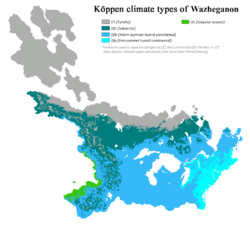
Walzenia is dominated by a humid continental climate, of the warm-summer variety on the east coast and the hot-summer variety in much of the interior. Cold air flows in from the Winivere Bay and the Arctic while warm air arrives from the warm Kayamuca stream in the Thalassan Ocean, producing dynamic and frequently extreme weather patterns. Kitchigami produces a strong moderating effect on much of its watershed, but heavy and frequent lake-effect snow is common in the winters, where snow can remain on the ground for as long as six months. Summers are typically warm and mild, although heatwaves are not uncommon. This zone is home to the famous Annesienne Northwoods and Lotharian forests, and features exceptional agricultural conditions. The west coast has a primarily mild, rainy oceanic climate that sees little variation throughout the year, and is dominated by temperate rainforests and montane forests.
The rest of the country experiences much harsher conditions:
The northern half of the country, north of Kitchigami, almost exclusively has a boreal climate, with a tundra zone along the north coast and arctic islands. Taiga forests and cold swamps host Walzenia's most iconic megafauna, the pygmy forest mastodon and greater hodag.
The Prairies occupy much of the area between Kitchigami and the Chiboschan Mountains. This region is exceedingly flat, frequently arid, and features very cold and harsh winters and very hot and humid summers. Wind speeds are often very high, especially in winter. The coldest temperature in Waltch history was recorded on the Prairie in Reding, Hachiwara on February 9th, 1991, at -63°C (-81.4°F), and the record hottest temperature was recorded 200 kilometers away in Gieltgras, Wattland, measuring 45°C (113 °F) on August 22nd, 2015.
The last major climate zone is the Chiboschan mountain range, which consists primarily of montane conifer forests, and cold desert and boreal/hemiboreal microclimates.
- Pygmy forest mastodon.png
The pygmy forest mastodon, once critically endangered, has recovered in the past century and is an iconic mascot of northern Walzenia.
Cranes taking flight in a marsh in southern Mescousin.
History
Main article: History of Walzenia
Indigenous peoples
Evidence of human habitation in what is now Walzenia dates back to at least 11,000 BCE. Archaeological records suggest that trade networks spanning the Kitchigami basin and coast of Winivere Bay were common as early as 1000 BCE, with evidence of copper mined from northern Maschoda being found as far away as modern day Enyama and Gristol in artifacts dated to approximately that period. In addition to trading their plentiful copper, peoples of the Kitchigami basin were also notable in pre-contact Norumbia for using their copper in tandem with advanced bronze-working, with bronze swords, tools, jewelry, and even sophisticated bronze lamellar armor being in use by many tribes by the 4th century CE.
Historically, these groups lived in complex, settled societies which utilized both agriculture and hunting-gathering. The first organized polities to rose to prominence in the region in the early 9th century, organically growing and shrinking as part of a system of patronage and ritualism. This period saw the rise of what historians call the Mound Builder culture, a people which are believed to have spoken a Šahaijan language and been related to the Hitena people. The Mound Builders, also sometimes called the Mošógrans (after their largest known city) ruled a large polity centered in modern Kuschona which is believed to have featured dense urban centers with complex manufacturing economies, public works projects, and a ruling class of priests. Their largest city, Mošógra, is believed to have been home to as many as 40,000 people at its zenith in the 13th century. Among the most notable achievements of this polity were its extensive earthworks and eponymous mounds, the latter of which were used for religious, ceremonial, burial, and elite residential purposes. The largest of these mounds, the Great Mound of Mošógra, is believed to have been upwards of 70 meters tall before it began to slump due to lack of maintenance. By the mid-15th century, most of the Mound Builders' urban centers had been abandoned for unknown reasons - historians theorize that a particularly severe season of flooding or droughts, or a severe plague, may have caused widespread famine and forced the inhabitants out into the countryside where they integrated with other tribes. Most of what is known about their culture has been learned through archaeology and oral history.
The height of the Mound Builder civilization coincided with the first regular arrive of Belisarian explorers and merchants in northeast Norumbia, whose early attempts at settlement and trade were stymied by native armies. The ruling clergy considered the Belisarians - or any foreigners not from Norumbia - to be nibiinaabeg, a sort of water sprite who lived under the sea and were thus associated with evil underworld spirits such as the underwater panthers and horned serpents. This fostered a deep mistrust of any groups that were not recognizably indigenous Norumbians, and make regular contact and trade with them a rare and strenuous affairs for centuries after the fall of the Mound Builders.
The decline of the Mound Builders ushered in a power vacuum and dark age for many of the tribes that had been under their rule or in their sphere of influence. Although this caused the First Nations suffered from technological and cultural stagnation in the 15th to 18th centuries, this period did lead to the rise of new powers throughout the Kitchigami basin: the odachiimikaan (singular: odachiimikaa).
Odachiimikaan is an Oniegamé term invented in the mid-18th century, vaguely translating to "the Big Lands/Countries"; their contemporaneous names varied considerably from source to source, but typically espoused the concept of an alliance or confederation more so than the kingdoms that many outsiders thought of them as. The Odachiimikaan were powerful quasi-states organized mostly along linguistic lines, and were dominated by what are today the most numerous indigenous peoples in Walzenia: the Masenatau, Oniegamé, Otoléia, and Hitena. Other peoples had large, organized polities as well, such as the Wasjow'en and Nâmiwanâw, but the "Big Four" are considered the most historically influential. They typically lacked formal leadership and were ruled by an assembly of elected chiefs who met yearly to relay their local tribes' wishes, and arrived at decisions by consensus. Notable exceptions to this were the Wasjow'en, for whom chief was a mainly (but not exclusively) hereditary title, and the Hitena, whose chiefs were elected only by and from among priests.
The introduction of firearms by what limited Belisarian and Wabayan trade the odachiimikaan allowed led to a period of endemic warfare, mostly focused around monopolizing the control of furs, iron, silver, and fluvial fisheries. This culminated in the Great Lake War, also called the Great Kitchigami War, from 1565 to 1589, which saw unprecedented mobilization and bloodshed between a two coalitions, consisting of the Oniegamé and Masenatau on one side and the Otoléia and Hitena; both coalitions were also accompanied by myriad smaller groups. Although the conflict began over beaver-hunting grounds in modern Sangwenae, it quickly escalated into a coordinated campaign throughout the Kitchigami basin. Following the drowning of several hundred warriors in a storm on Lake Kitchigami and a dramatic surprise assault on the their core territories by a force of Oniegamé war mastodons, the Otoléia were eventualy defeated and forced to vacate all territory east of the Osawanon Mountains and north of the Saint Anne River, while the Hitena were largely absorbed by the Masenatau or else driven westward into the prairies, marking the beginning of the Hitena Gokekjaneną and dissolving their odachiimikaa.
Ottonian colonization
The Great Lake War vastly weakened all parties, even the victors. High-end estimates indicate that as much as 25% of the total population of the Kitchigami basin may have perished in this period due to combat, ethnic cleansing, and famine. The resulting economic downturn allowed Tyrrslander merchants and prospectors, who had been limited to small trading outposts along the coast since the 1200s, to seize territory from the drastically weakened Otoléia in the Aderon Wars from 1609 to 1634, ensuring a powerful, permanent position in the region. The colonies introduced a policy of resettlement, in which the Otoléia and other indigenous peoples in the region were forcibly relocated away from arable land and navigable rivers, making room for Belisarian settlers.
These settlers were primarily Brasbourgish refugees from Staalmark, fleeing due to religious and linguistic persecution, who were welcomed by the Tyrrslandic crown and promptly sent to Norumbia in large numbers as laborers and leefer vum bësch in exchange for land and nominal self-governance. Many Brasbourgers adopted the idea of the virbestëmmt rjochten (destined rights), believing that, as they and many other Niederaulish people were historically blocked from self-rule in Belisaria, their expulsion from Staalmark was a way of God rewarding them with a new, autonomous homeland in Norumbia. This idea spread among other groups back in Norumbia and encouraged an early, significant exodus of Nideraulish groups from Belisaria to the Norumbian colonies. These colonists formed the basis of what would develop into the Belo-Waltch, and the modern Waltch language is primarily descended from the many Middle Niederaulish dialects spoken by them. By the beginning of the 17th century, these colonies began to consolidate all throughout the east coast and Annesienne Gulf and became colloquially known as the Ten Colonies (Zéng Kolonien) or Sovereign Colonies (Souverän Kolonien), the latter in reference to Lake Sovereign but officially discouraged by the Tyrrslandic crown due to its implications of independence.
From 1621-27, the Colonies waged the Annesienne War against a coalition of the Otoléia and Oniegamé. While it was a Phyrric victory for the Colonies that stalled colonial expansion for over a century, the Ottonians had secured both sides of the Saint Anne River and signed the Great Peace of Moienrout, which guaranteed the rights of Tyrrslandic traders throughout the Kitchigami basin and opened up most of the Osawanon Mountains east of Kitchigami to settlement.
Following this defeat for the indigenous peoples, the odachiimikaan began finding ways to adapt to their new situation. The Otoléia, finding most of their traditional lands under Tyrrslandic sovereignty, began adopting many Ottonian practices, such as private property, centralized government, and Christianity in an attempt dissuade the settlers from forcibly removing them. This would eventually culminate in the formation of the Taigon Republic in 1715. The Oniegamé odachiimikaa, fearing a similar fate, reorganized around the concept of a prolonged war in the hills and forests north of Kitchigami, forming gichiwininiweg ("great bands") - confederated bands larger than traditional tribal units, capable of amassing the manpower and resources necessary to wage war against the colonizers, while remaining decentralized and independent of leaders. Most Oniegamé tribes, occupying much of what is now northern Walzenia, would remain functionally independent for over two more centuries, only beginning to federate into Walzenia following the Northern Wars in the late 19th century. The Hitena remained largely removed from the politics and conflicts of the Kitchigami basin, with no organized governments arising among the diaspora until the middle of the 19th century, but typically lived as farmers, merchants, and mercenaries on the western prairies. Hitena troops and supplies were integral to Waltch success in the Western Theater of the Northern Wars. Smaller, less influential groups and odachiimikaa generally found themselves either absorbed by larger indigenous states or the Waltch. The Wasjow'en, in particular, found a role as middlemen between the Waltch, Belisarians, Masenatau, Oniegamé, and other Norumbians, remaining mostly autonomous well into the 19th century.
The Masenatau Odachiimikaa, which had been neutral during the conflict, began a process of internal reforms, spearheaded by Chief Auschaiew of the Machnachwa band. Auschaiew had become knowledgeable of Ottonian culture early in life, even traveling Belisaria, where he was exposed to the literature, politics, and history of the colonizers. He used this experience to ingratiate himself to colonial officials and adapt Masenatau culture to changing conditions. Auschaiew convinced the odachiimikaa's council to formalize their structure into a written constitution, founding a federal republic - the Masenatau Republic (Masenaehtaenaew-māwacēhnetaw) - in 1707, which federated with the Avalerian Republic in 1753. Auschaiew also arranged, with the help of Ghantish and Tsurushimese interests, for the establishment of the first indigenous foundries and manufactories, allowing the Masenatau to manufacture their own complex goods in large quantities, affording them economic independence from the colonizers. Although it superficially resembled the Belisarian notion of a republic, unlike its contemporary in Taigon, the Masenatau Republic more thoroughly adapted the concept to indigenous culture and ideals, namely: the vast majority of land was still held communally, with ownership based on usufruct; women were granted suffrage from the outset of the republic; governance was based in a form of semi-direct democracy; and the economy was based in a form of indigenous socialism. This state had a strong influence on the creation of the Avalerian Republic's federal structure, and eventually its socialist movement, and so Auschaiew is well-regarded among most Walzers as a revered founding father.
The 17th century also saw the rise of the Mëschtes group for the first time. Mëschtes (derived from the Middle Niederaulish word gemëschted, mixed, and a cognate to Metis and Mestizo) is a term broadly applying to any person of mixed indigenous and Belisarian descent. Historically, it was a flexible categorization that was used or ignored depending on the wealth and status of an individual. A mixed-race individual whose appearance is indistinguishable from a "pure" native may have been welcomed as a Walzer if they were wealthy or their Waltch parent was well regarded, while another Mëschtes indistiguishable from a "pure" Walzer may be ostracized and marginalized simply for a political or personal vendettas. By the mid-1700s, Mëschtes were the most numerous ethnic group in the Kitchigami basin, and began to develop a distinct identity separate from their Waltch and First Nations origins that varied greatly depending on the locale. Racial politicking meant that Mëschtes rights were generally uncertain and they were frequently relegated to second-class citizenship in both First Nations and Waltch-governed areas, but this became especially prevelant in white Waltch locales going into the 19th century.
In the 1670s, the Ten Colonies were a major participant in the Battle of the Thalassian, a prolonged maritime conflict between Tyrrsland and Ghant. While the Colonies incurred only minor losses compared to Tyrrsland, the Norumbian theater saw heavy combat between Ghant-aligned indigenous forces and Waltch colonists. Tyrrsland lost the war and, while it retained hold of its Norumbian colonies, incurred heavy losses. Seeking to recoup its losses and more directly combat Ghantish influence in Norumbia, the Tyrrslandic crown began more aggressively enforcing its polices over the Ten Colonies and increasing its military presence there, causing the colonists to react with ever increasing agitation and indignation. By the mid-17th century, the Colonies had begun forming a distinct national identity based around their Niederaulish language, Protestantism, and general separation from Tyrrsland, and, when faced with an increasingly hands-on stance by the Tyrrlandic crown, began agitating for increased sovereignty and even independence.
Avalerian Republic
Waltzing Coups period
Northern Wars
Waltch Socialist Republic
De Leonist rebellion
Democratic Federation
The Emergency
Federated Commonwealths
Government and politics
Chancellor
Stettholder

Walzenia is a federal, libertarian socialist council republic. Despite a turbulent history, democratic norms are strong in Waltch politics in society, with human dignity, social consciousness, and individual autonomy enshrined in the constitution.
Federal executive and legislative powers are combined together and vested in the Commonwealth Congress, a unicameral body under a delegate model of representation. Congress vests executive power in a General Committee, empowered to act on Congress's behalf in coordinating Federal Public Services, as well as making decisions when it is not in session or during emergencies. Congressional representatives are elected via popular vote at the cantonal-level every two years, although specific electoral systems vary widely. The Stettholder is the presiding officer of Congress, overseeing debates and votes, and is elected by the membership. The Stettholder also serves on the General Committee as a liaison and watchdog for the legislature.
The secretary-general of the General Committee is considered the de facto Chancellor of Walzenia and the highest-ranking Waltch official, presiding presides over Committee meetings and carrying out certain representative functions that, in other countries, are the business of the head of state. In urgent situations where a Committee decision cannot be made in time, the chancellor is empowered to act on behalf of the whole Committee. Apart from that, though, the chancellor is a first among equals, having no power above and beyond the other members. The General Committee typically consists of 23 members, at minimum, including the Stettholder and the commissioners of the Federal Public Services (of which the the Chancellor is one), with the possibility of additional ad hoc members being approved by Congress. The Committee is appointed by Congress every two years following elections; a Chancellor is appointed at the beginning of every year, with a term limit of five years; Committee members in general are limited to ten years.
Since the 1970s, Waltch politics has been characterized by three large parties - called the Big Three, or Fire (due to their identifying colors), Parties: the Warnerist All-Socialist Front (ASF); the libertarian-Warnerist/councilist Councils for Unity and Democracy (RED); and the market socialist Social Alliance (SAZ). The Big Three are big tent parties with significant ideological overlap, but nonetheless are dedicated to specific Leftist tendencies. They have historically governed together in grand coalitions, although other coalitions are not unheard of. There are four other parties represented at a federal level: Debenindizo (IND), an indigenous rights party; Black Block (ZWB), an anarchist organization pushing for greater decentralization; Ecological Consensus (EKO), an environmentalist party advocating social ecology, and Geocrats for Development and Independence (GEO), a geolibertarian party. The current government is formed by a coalition of the ASF and RED, headed by Chancellor Theodosia Wolff and Stettholder Minegan Kovarich.
Walzenia's federal structure is flexible and has historically drifted between levels of centralization. Some consider Walzenia to currently be a de facto confederation due to the amount of autonomy enjoyed by individual commonwealths. Each level of government enjoys considerable legal sovereignty from one another, building power from the bottom up, so long as they adhere to constitutionally-defined protections of human rights; the refusal or inability to provide for the dignity and rights of all inhabitants is the primary reason why the federal government may intervene in the affairs of a lower level of government. Otherwise, each individual subdivision exercises considerable freedom in their individual political and economic laws, although, in general, governments typically mirror the model of the federal government, particularly its unicameral, directorial nature.
In addition to the delegative mandate, many Waltch constituencies strive to attain a degree of liquid democracy, in which individual citizens can offer direct feedback on policy issues and directly vote on legislation and implementation.
Law
Walzenia has a common law system originating from 18th century Ottonian law, with elements of socialist law being introduced since the early 20th century. The system has been geared towards restorative justice since the 1950s. At a local level, citizens of a commune elect members to a Communal Court (colloquially called a comrades' court), which serves to mediate minor disputes and make decisions on minor criminal cases, which can also be passed to a higher court. At the cantonal level, citizens (who need not be trained jurists) are elected to seven-member Peoples' Courts. At the commonwealth level, trained jurists are appointed by the commonwealth legislature to a Commonwealth Court. The specifics of term lengths and term limits vary considerably at all levels. At the federal level, the Federal People's Court (Federale Volks' Gericht, FVG) serves the country as a whole and as the court of last resort. Members of the FVG are trained jurists elected by the Commonwealth Congress to serve 15-year terms, with no possibility of a second term and mandatory resignation required at age 70. The Federal Constitutional Court (Federale Constitutioneel Gericht, FCG) is a separate federal judicial entity that is responsible for constitutional matters and holds the power of judicial review, with similar term limits to the FVG.
Law enforcement is handled primarily by local police departments and reeve's offices, with commonwealth police providing broader services. Federal agencies carry out certain specialized duties across commonwealth lines. Police departments are typically divided into specialized units trained to deal with medical and mental health emergencies. Police officers are typically unarmed, although in some jurisdictions they may be armed with less-lethal weapons such as pepper spray, tasers, or batons. However, most jurisdictions have specialized armed response teams to deal with crises involving lethal weapons. The death penalty has been outlawed since 1957, and prisons at all levels focus on rehabilitation and reintegration, with a low nationwide rate of recidivism.
Transparency, accountability, and anti-corruption are all important pillars of Waltch institutions, and the perceived rate of corruption is quite low. However, given the decentralized nature of Waltch institutions, corruption at the local levels is not unheard of. Additionally, the Waltch intelligence community is heavily scrutinized for its historical role in the 1975 Decemberist Coup and as a naturally secretive, unmonitored government apparatus. The Federal Overwatch Committee (Federale Owerwachen Comité, FOC/FOCom)) is the primary anti-corruption agency tasked with investigating and prosecuting cases of government corruption, as well as performing public outreach and providing advice to local institutions on reducing and preventing corruption.
Foreign relations
Military
The Federal Waltch Armed Forces (Federale Valzisch Krijgsmacht) , colloquially and historically called the Bondeweier, are the military and paramilitary forces of Walzenia. It is a professional, volunteer force of approximately 150,000 active personnel and 400,000 reserve personel. It is comprised of six branches: the Army (Arméi), Navy (Marine), Air Force (Loftmacht), Marines (Mariniers), Federal Reserves (Federale Reserven), and Red-Black Guards (Rout-Zwarte Wiechts). The Federal Reserves are the reserve forces of the Army and Air Force, and the Red-Black Guards is an umbrella organization of federally subsidized and organized paramilitary militias. Walzenia's military expenditure was $49 billion in 2020, approximately 3.5% of national GDP and 7% of the federal budget. Conscription has been illegal since 1955. Military leadership is elected democratically by soldiers in a unit up to the battalion level; the military chain of command descends from the General Committee, to the Federal Public Defense Service, to the Federal Security Council, to regional commanders, advised throughout by the Joint Chiefs of Staff consisting of the most senior military officials. Waltch equipment is typically purchased or licensed from allies, such as the PAL-WZ, a variant of the Ottonian-Ostrozavan PAL rifle, which was the standard issue rifle of the Bondeweier from 1961-1993, and the M5 Bizhiw which is an improved variant of the Ostrosavan OPU-S65/G2 in use since 1982. However, some indigenous development has taken place, most notably the AG-93, which became the standard service rifle in 1993, and the S10 Chora, a multirole fighter based on the Ghantfighter 3000 that entered service in 1987.
The Waltch intelligence community is generally recognized to play a major role in strategic military and foreign policy decisions. The Center for Permanent Revolution (Zentrum fir Permanent Revolutioun; ZPR, stylized as ZEPHYR or ZIPPER) has historically played a defining role in foreign and military intelligence, as well as espionage, including political agitation and the arming and training of foreign militants. The Agency for the Suppression of the Counter-Revolution (Agence fir de Ënnerdrécking van de Contrarevolutioun; AEC, stylized as CONTRA) is the primary counter-terrorism and domestic intelligence agency, charged with monitoring threats to Waltch citizens, interests, and the Waltch constitution both at home and abroad, as well as devising policy and operational plans to mitigate them.
Constituencies
The most fundamental political subdivision of Walzenia is the neighborhood, a conglomeration of households typically ranging from 20 to 200 people. These neighborhoods come together to form municipalities, a catch-all term referring to various rural and urban population centers which consider themselves one corporate unit. Municipalities, in turn, organize themselves into communes, of which there are 1,732. The commune is considered the most ubiquitous and relevant level of government, far-reaching enough to allow multiple municipalities to pool significant resources and interact with higher levels, but localized enough to allow for speedy communication between citizens and representatives and direct involvement by citizens in legislation and implementation of policy. Communes then organize themselves into cantons. Cantons are expected to encompass a population of roughly 100,000 people, and are the level at which representatives to the Commonwealth Congress are elected; thus, there are currently 500 cantons, including approximately two dozen with less than 100,000 people, and cantons are routinely rearranged, created, or dissolved every ten years following the national census to better reflect new population statistics. The cantons form the federated commonwealths, of which there are 27. Commonwealths are the highest-level subdivision in Walzenia.
|
Economy
Walzenia is an industrialized country with a high standard of living, a low GINI coefficient, and one of the highest GDPs per capita in the western hemisphere The service sector contributes approximately 60% of the total GDP, industry 35%, and agriculture 5%. The unemployment rate was 3.8% as of January 2020. Major Waltch exports include capital goods, commercial/utility vehicles, wood/paper products, basic metals, and foodstuffs (especially dairy and beef products). Walzenia is also a prominent exporter of hydrocarbons and uranium in the western hemisphere.
The Waltch economy is a primarily market socialist system consisting of a series of interlocking economic models. While most jurisdictions function under a socialist mode of production in which all firms are owned and controlled through workers' councils, socialism is technically not enforced by the constitution; this has allowed some locales to drift into unorthodox systems, most prominently the geolibertarian and market anarchist communes of southeastern Walzenia.
At the local level, most citizens' basic needs are addressed by an informal gift economy drawn from local farms and businesses, with many specialized services also provided in a system of mutual aid. Municipalities and communes frequently collaborate together in the spirit of mutual aid, sharing resources and expertise to accomplish both shared and individual goals. Communes, cantons, and commonwealths also participate in a decentralized planned economy in which organizations at various levels negotiate and arrange for the sharing of resources, manpower, and expertise in pursuit of meeting needs and planning goals. The federal government helps facilitate this planning through the Federal Economic Coordination Council (abbreviated and stylized as ECORAD), which aggregates and analyzes economic data and stimulates communication between smaller economic entities. ECORAD is under the purview of the Federal Public Economics Service (Federale Ëffentlig Economie Dienst, FED-Economie), which directly participates in dirigisme to direct economic activity and foster economic activity, and uses government agencies and state-owned enterprises, known as commonwealth corporations, to manage and deliver goods and services to areas that the other economic systems have difficulty providing for. After all of these systems have been passed through and there has still been a failure of supply, international markets typically fill in the gaps, with priority given to surplus goods sold by firms elsewhere in the country.
Walzenia is notorious for its strict international trade regulations. Under the Standards for Ethical Capitalist Interaction (Normen fir Ethische Kapitalistig Interactie, NEKI), foreign firms typically have to meet very strict guidelines for ethical trade and sustainability in their supply chains, as well as meeting a certain standard of unionization or workplace democracy. As a result, most foreign firms operating in Walzenia tend to be cooperatives and state-owned enterprises, especially those originating from countries in the Kiso Pact.
Agriculture
Energy
Tourism
Transportation
Science and technology
Culture
Architecture
Walzenia has a rich architectural history. Traditional First Nations architecture was characterized by the wigwam, tipi, or snow house in nomadic cultures, and the longhouse or plank house in cultures with permanent settlements. Historically, cities of the major odachimikaan housed upwards of 40,000 people with complex, specialized economies. In the south-central region of the country, large earthworks and mounds were constructed by some groups. After the beginning of Ottonian colonization, some First Nations enthusiastically adopted log, timber frame, and post-and-plank construction techniques. These were often influenced by Tsurushimese elements, as artisans from Tsurushima were often invited during the 17th and 18th century to impart certain crafts and knowledge. Once stonemasonry became widespread, Masenatau communities became known for their buildings constructed out of Mescousin red sandstone.
Belisarian Waltch architecture followed similar patterns for much of the 16th-18th centuries. Stone structures did not become common in Belisarian-descended communities until the early 19th century. The 19th century began with the vernacular Federal Style, which was soon overtaken by the zealous growth of the Gothic Revival and Renaissance Revival styles, which, alongside Beaux Arts influences, dominated the Waltch architectural landscape until closing decade of the century. From the 1890s on, Art Nouveau was the most prominent style until the end of the Waltch Civil War in 1921, when it was replaced by state-sponsored modernist styles, especially Art Deco, WPA Moderne, and stripped classicism. Since the second half of the 20th century, Waltch architecture has been characterized primarily by International style and Structural Expressionism.
Forms of address
Since 1920s, Mr. and Mrs. (Mnr. [maneer] and Mfr. [mafrou]) have fallen out of common usage in Waltch society. Formal, official settings typically use the gender-neutral terms comrade (kameraad, Kmr.) or, more often, since the 1970s, naschet (Nas.). The term naschet was coined by indigenous socialist groups in the late 19th century, created from the Masenatau words nētekaeh and neqat, gendered terms referring to a friend or companion.
Comrade or naschet may still be used as forms of address in informal or casual settings, but other terms are generally more common. Neighbor (nobuur \ buur) is frequently used for acquaintances and colleagues, while brother/sister/sibling (broder\ suster\ zibbe) are often used for close friends. The word friend (frënd) is an intermediate, flexible term.
Symbols
The flag of Walzenia is the Moienrout (lit. Waltch: morning red, meaning sunrise), also called the Dondervugel (thunderbird) and Balken en Wulleken (Beams and Wings). It was adopted on December 12th, 1976 as part of a set of decolonization reforms. It was designed by indigenous rights activist Wijome Meyer and won a contest and referendum for a new flag design the previous year. It features a thunderbird and the blue stripes of the House of Avaler on a red background, symbolizing the unity of indigenous and Belisarian-descended Walzers in pursuit of socialism. The national anthem, This Land Is Your Land (Waltch: Dës Land Es Jour Land), originated as a folk tune written by Houtrij Goethij in 1933 and has many lyrical variations. A version written by Hike Verenhannes, with lyrics revolving around militant democracy and cosmopolitanism, was chosen to replace the United Front Song as the national anthem in 1976.
The national animal is the mythological thunderbird, but animal symbols and personifications of the country include an avalerion or white eagle, beaver, badger, brown bear, and mastodon.
Walzenia has two human national personifications: Valzia, symbol of the Belisarian Waltch, and Osiakāh, symbol of the First Nations. Valzia is a synthesis of figures such as Nike, Justice, Liberty, and St. Anne depicted as a winged, robed woman, variously portrayed as wearing either a laurel crown, liberty cap, a crown forming a halo, an ancient helmet, while wielding some combination of a torch, hammer, laurel wreath, or sword. Osiakāh was derived from Corn Mother goddesses worshipped by many First Nations, and is often depicted in many various traditional indigenous outfits, variously holding a corn cob, ax, torch, or sword. Both women are occasionally portrayed holding or guiding a young child, and are frequently portrayed together since the 1980s. A 40-meter tall statue of Valzia, Valzia Welcoming The World, stands in Viktoria Harbor, depicting a winged Valzia with arms outstretched wielding a torch and wreath. Another prominent depiction is Sisters, a pair of 30-meter tall statues of Valzia and Osiakāh, reaching out towards each other while standing on opposite banks of the Saint Anne River, where the river meets Lake Kitchigami.
Demographics
| Rank | Republic | Pop. | Rank | Republic | Pop. | ||||
|---|---|---|---|---|---|---|---|---|---|
 Jabwygan Viktorya |
1 | Jabwygan | Meskosin | 1,536,170 | 11 | Bochiket | Meskosin | 519,376 |  Dodagon  Mawøsaw |
| 2 | Viktorya | Nytīrsland | 1,397,866 | 12 | Askala | Jenasha | 485,747 | ||
| 3 | Dodagon | Jenasha | 946,921 | 13 | Tososa | Meskosin | 443,305 | ||
| 4 | Mawøsaw | Zhångweshaki, M.A. | 754,727 | 14 | Mishkodaga | Kodywakī | 427,133 | ||
| 5 | Menahok | Weskoki | 729,401 | 15 | Chugara | Madychīra | 329,350 | ||
| 6 | Amested | Mågdeland | 700,298 | 16 | Åkonemy | Meskosin | 393,463 | ||
| 7 | Sakyo | Jenasha | 677,711 | 17 | Weljemaj | Jajīgagī | 316,446 | ||
| 8 | Bajiwan | Kodywakī | 660,247 | 18 | Menysha | Kodywakī | 254,389 | ||
| 9 | Nykambrik | Nytīrsland | 621,001 | 19 | Glywa | Jajīgagī | 217,137 | ||
| 10 | Shahona | Weskoki | 568,113 | 20 | Sosasø | Oskåtosa | 173,452 | ||




